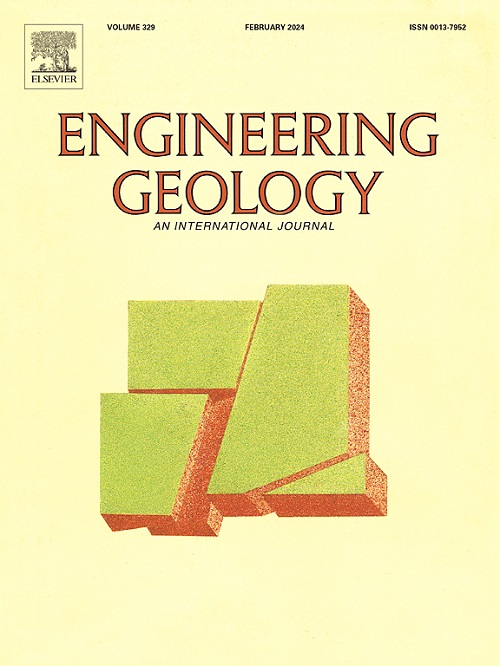Impact of overburden pressure on the thermo-hydro-mechanical behavior of silty sand during a freeze-thaw cycle in the context of Artificial Ground Freezing
IF 6.9
1区 工程技术
Q1 ENGINEERING, GEOLOGICAL
引用次数: 0
Abstract
Underground excavations often involve soft, weathered soils and rocky formations that are mechanically unstable, necessitating effective stabilization methods. Artificial ground freezing (AGF) has emerged as a viable option, offering enhanced mechanical strength and reduced permeability. However, challenges such as frost heave and thaw-induced displacements, especially in urban settings, remain critical concerns. The influence of overburden pressure on soil freezing and deformations is complex, highly coupled, and not fully understood.
In this context, freeze-thaw (FT) tests were conducted on silty sandy soil under a wide range of applied vertical stress, varying from 10 to 4000 kPa, using a unique, modified temperature-controlled oedometer. Results reveal a strong inverse correlation between applied stress and generated frost heave. Higher stresses delay the onset of freezing, alter phase change, and reduce heave rates. The study also highlights the densification of the normally consolidated fine-grained soil and the net volume reduction by the end of the FT cycle. Reloading the thawed soil after an FT cycle under low stresses renders the soil softer and more susceptible to significant settlements, highlighting the detrimental impact of the FT cycle. In contrast, post-thaw loading after an FT cycle under high stresses results in a marked shift in the slope of the initial compression curve, reflecting a significant increase in stiffness, similar to an overconsolidation effect. This indicates a fundamental change in the soil structure that reduces its compressibility after the FT cycle under high applied stress. The findings highlight the complex interactions between temperature, applied stress, and soil response to the FT cycle. These interactions are key to understanding frost heave and thaw settlements in urban environments with overburden pressure. The study offers insights to help engineers better predict ground deformations and optimize AGF design in various geological contexts.
求助全文
约1分钟内获得全文
求助全文
来源期刊

Engineering Geology
地学-地球科学综合
CiteScore
13.70
自引率
12.20%
发文量
327
审稿时长
5.6 months
期刊介绍:
Engineering Geology, an international interdisciplinary journal, serves as a bridge between earth sciences and engineering, focusing on geological and geotechnical engineering. It welcomes studies with relevance to engineering, environmental concerns, and safety, catering to engineering geologists with backgrounds in geology or civil/mining engineering. Topics include applied geomorphology, structural geology, geophysics, geochemistry, environmental geology, hydrogeology, land use planning, natural hazards, remote sensing, soil and rock mechanics, and applied geotechnical engineering. The journal provides a platform for research at the intersection of geology and engineering disciplines.
 求助内容:
求助内容: 应助结果提醒方式:
应助结果提醒方式:


